
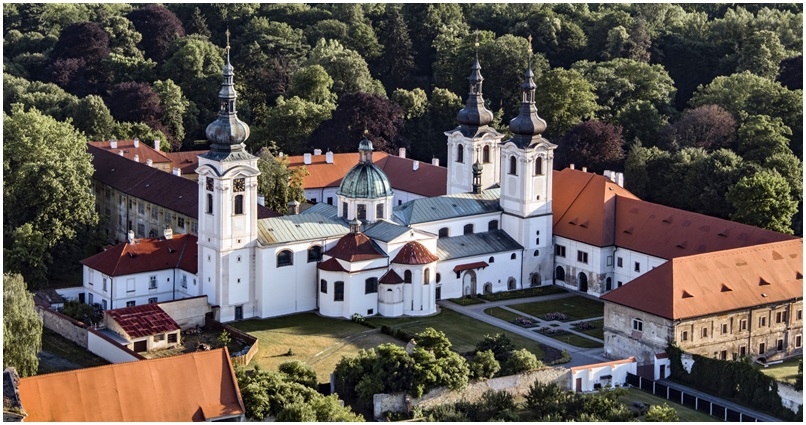
Church with monastery
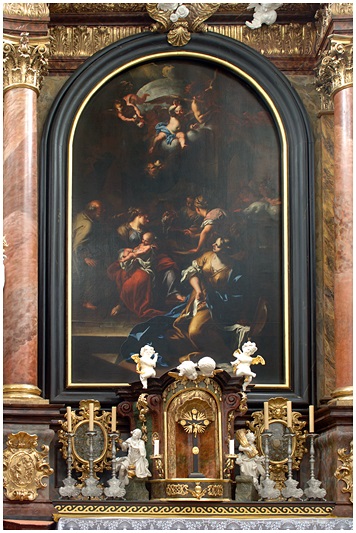 The beginning of the convent in Doksany dates back to the year 1144 when it was founded by Princess Gertruda as a Sisters` Convent of the Monastery of Strahov in Prague.
The beginning of the convent in Doksany dates back to the year 1144 when it was founded by Princess Gertruda as a Sisters` Convent of the Monastery of Strahov in Prague.
Its history was similar to that of many other monasteries: flowering as well as decay, wealth as well as poverty, wars and floods and fires. The regular life was uninterrupted until 1782, when the convent was abolished by order of Emperor Joseph II. At that time there were 49 sisters in the community. It served as an army hospital for a short time and in the end it was sold to a noble family of Aehrenthals who rebuilt it into a castle. The north wing was used as stables and a cowshed. These adaptations, together with a gradual decay under the communist regime, led to a complete ruin. The church and Parish house remained under the administration of Praemonstratensians of Strahov, with a short break during Communism. The first attempt to renew the contemplative life of the Praemonstratensian Sisters was made at the beginning of the 20th century. Several girls started their formation in the convent of Zwierzyniec in Cracow, Poland, but after their return it transpired that it was not possible to begin a cloistered regular life because of the reasons given by the Church and State administration. That was why the Congregation of the Premonstratensian Sisters of the Holy Mountain came into existence (1902) and began to devote their time to apostolic works. But the desire for a life more strictly contemplative did not disappear from the hearts of the sisters.
In 1989 the fall of the Communist regime brought freedom to the Church. And so the idea to renew contemplative life could become a reality step by step. The ancient convent in Doksany which, regardless of considerable damage was still standing was chosen as a residence for the first Sisters. In 1997 Strahov Monastery bought the north part of the former Convent from the State and plans for its reconstruction started. Father Abbot Michael Projezdny asked the Canonry of Cracow to send Sisters to renew their former Motherhouse (the convent in Cracow had been founded in 1164 from Doksany). Four Sisters (two from Poland and two from the Czech Republic) began their community life on the 31st. of January1998, provisionally in the parish house. The renovation of part of the convent started in 1998. In 2002 the work on one wing was finished and in January 2003 the community moved in. Until 2007 they were a dependent House of the Cracow convent and were living in a constitutional cloister.
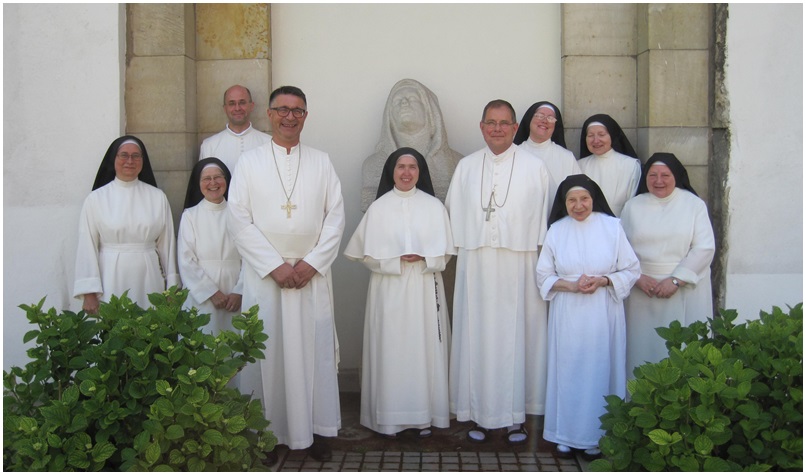
 THE CANONRY OF THE BIRTH OF OUR LADY. In 2007 the sisters´ community in Doksany became legally independent. On 9th March 2007 the Congregation for the Regulars and the Secular Institutes in Rome issued the decree of autonomy; the convent was confirmed by the Abbot General as the independent Sisters' Canonry under the jurisdiction of the Order. The Abbot of Strahov Canonry was appointed the Father-Abbot of the new Canonry according to the centuries-long tradition of the convent in Doksany.
THE CANONRY OF THE BIRTH OF OUR LADY. In 2007 the sisters´ community in Doksany became legally independent. On 9th March 2007 the Congregation for the Regulars and the Secular Institutes in Rome issued the decree of autonomy; the convent was confirmed by the Abbot General as the independent Sisters' Canonry under the jurisdiction of the Order. The Abbot of Strahov Canonry was appointed the Father-Abbot of the new Canonry according to the centuries-long tradition of the convent in Doksany.
Their mission - as contemplative Canonesses of the Praemonstratensian Order - is the solemn celebration of the Holy Mass and canonical hours of the Divine Office in choir and intercession. Their apostolate of prayer and sacrifice is aimed principally at the spiritual support of their brethren, both from Strahov Canonry and other Canonries. They pray for the people who ask them to invoke the intercession of St. Norbert - including a prayer for pregnant women and marriages wanting children. Their Founder has become the last resort of a great many married couples and mothers.
As part of their usual daily work they make liturgical vestments, grow medicinal herbs and make teas and liquors from them. They care for the church, and take in guests who want to spend some time in prayer and silence.
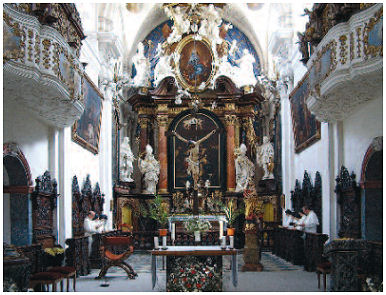 The church of the Nativity of our Lady |  Our propst.. |
There are a few women who are more closely connected with the sisters as Tertiaries of the Canonry. They take part in liturgical life and help in various ways according to their abilities. A large group of benefactors - with whom they keep in regular contact - belong to their spiritual family too. Without their spiritual and material support the Canonry could not develop
The sisters realize that there are still demanding tasks lying before them and they want to work on them according to their strengths They believe that our Lord who guided them in past years will take charge of His work in future as well, and bring to the final goal what He himself began there.
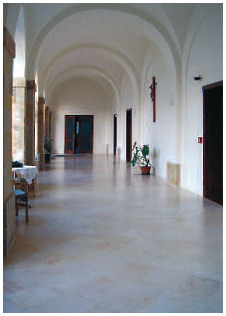 The cloister | 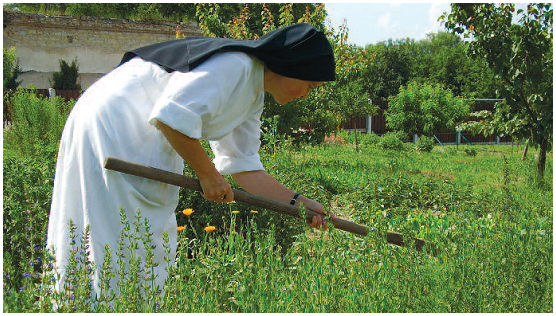 Working in the garden with - The cloister herb |
Web: klasterdoksany.cz
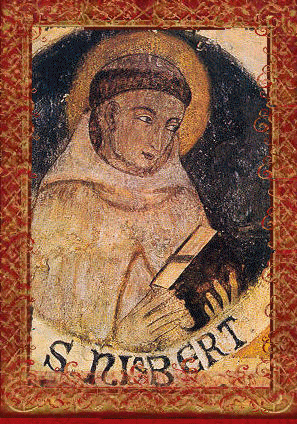











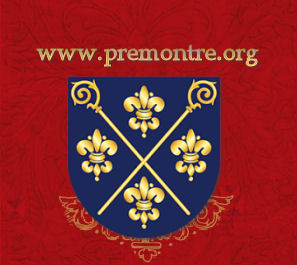
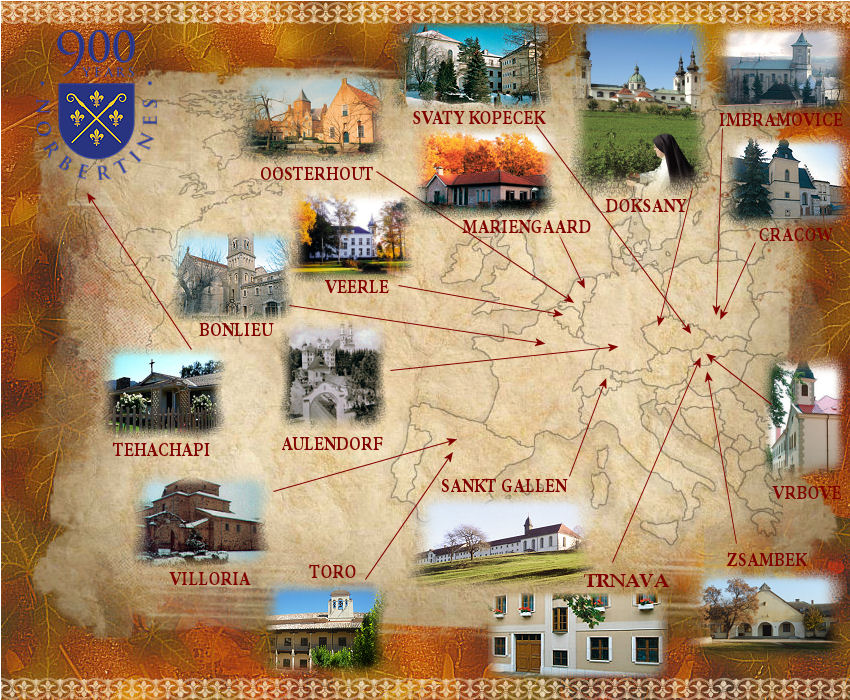
 |
| 

















 www.norbertinesisters.com
www.norbertinesisters.com